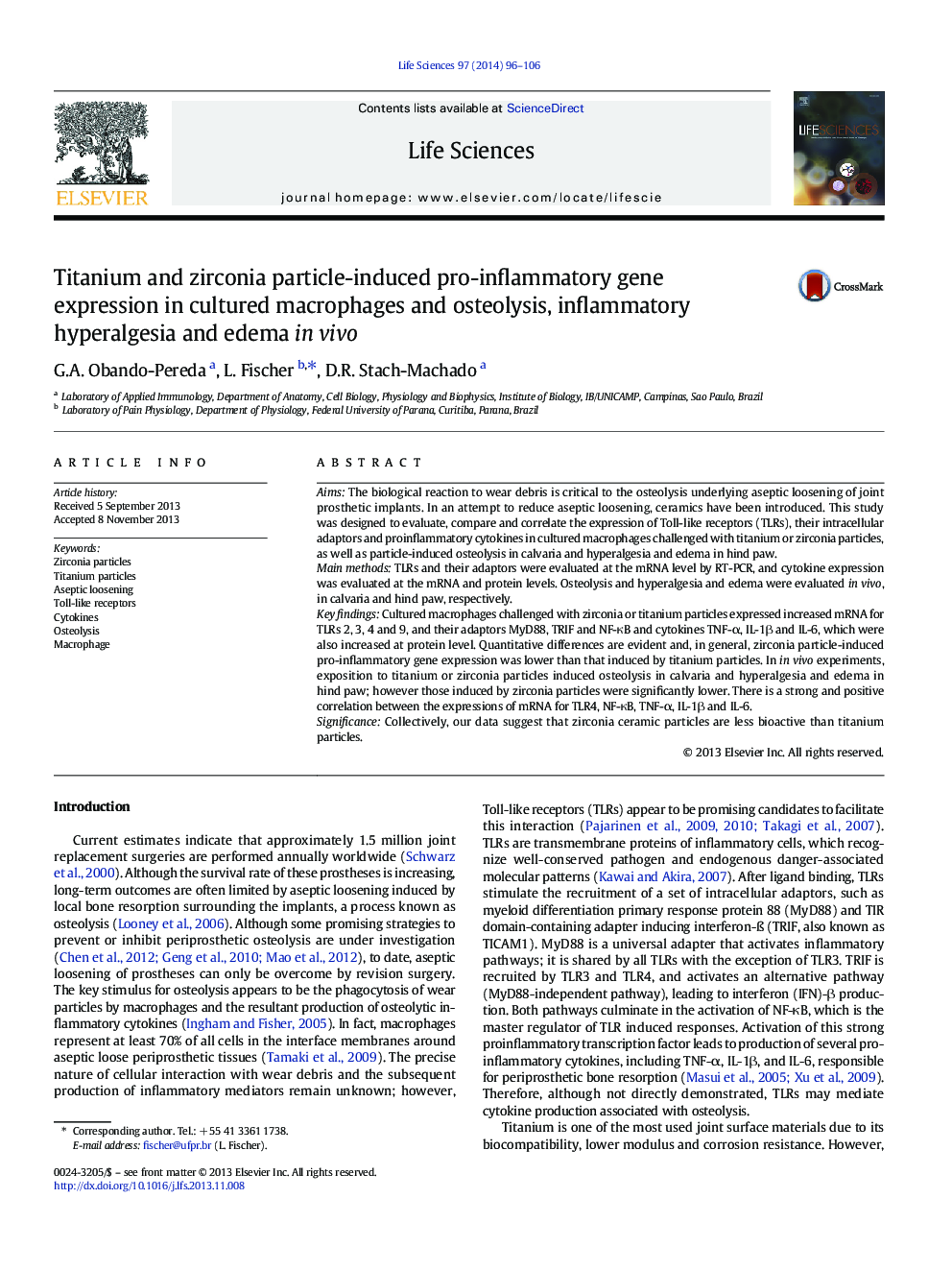| Article ID | Journal | Published Year | Pages | File Type |
|---|---|---|---|---|
| 2551384 | Life Sciences | 2014 | 11 Pages |
AimsThe biological reaction to wear debris is critical to the osteolysis underlying aseptic loosening of joint prosthetic implants. In an attempt to reduce aseptic loosening, ceramics have been introduced. This study was designed to evaluate, compare and correlate the expression of Toll-like receptors (TLRs), their intracellular adaptors and proinflammatory cytokines in cultured macrophages challenged with titanium or zirconia particles, as well as particle-induced osteolysis in calvaria and hyperalgesia and edema in hind paw.Main methodsTLRs and their adaptors were evaluated at the mRNA level by RT-PCR, and cytokine expression was evaluated at the mRNA and protein levels. Osteolysis and hyperalgesia and edema were evaluated in vivo, in calvaria and hind paw, respectively.Key findingsCultured macrophages challenged with zirconia or titanium particles expressed increased mRNA for TLRs 2, 3, 4 and 9, and their adaptors MyD88, TRIF and NF-κB and cytokines TNF-α, IL-1β and IL-6, which were also increased at protein level. Quantitative differences are evident and, in general, zirconia particle-induced pro-inflammatory gene expression was lower than that induced by titanium particles. In in vivo experiments, exposition to titanium or zirconia particles induced osteolysis in calvaria and hyperalgesia and edema in hind paw; however those induced by zirconia particles were significantly lower. There is a strong and positive correlation between the expressions of mRNA for TLR4, NF-κB, TNF-α, IL-1β and IL-6.SignificanceCollectively, our data suggest that zirconia ceramic particles are less bioactive than titanium particles.
